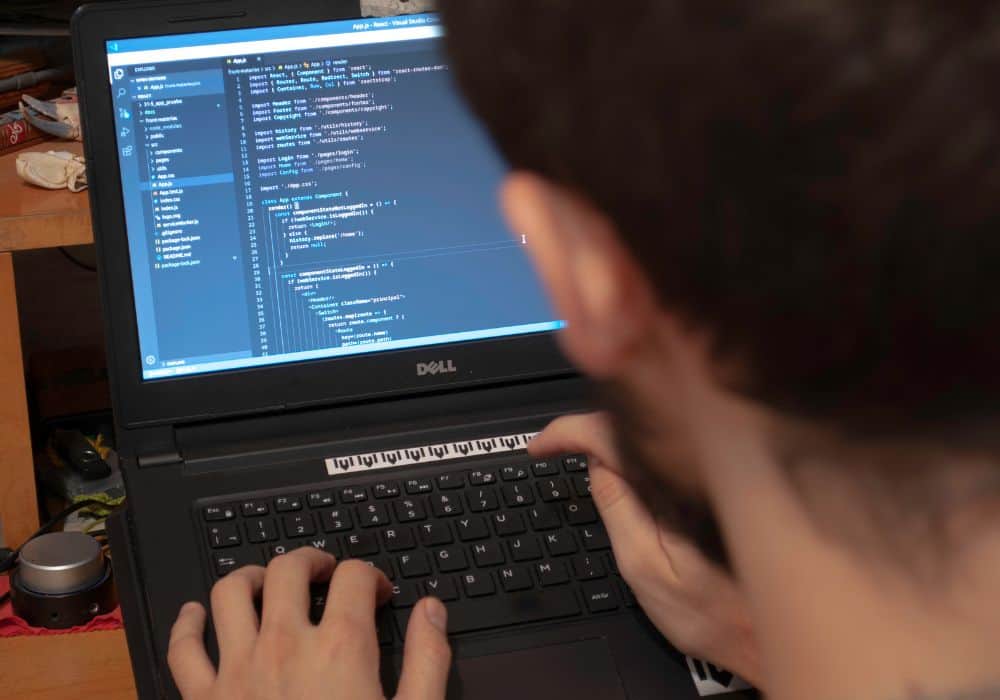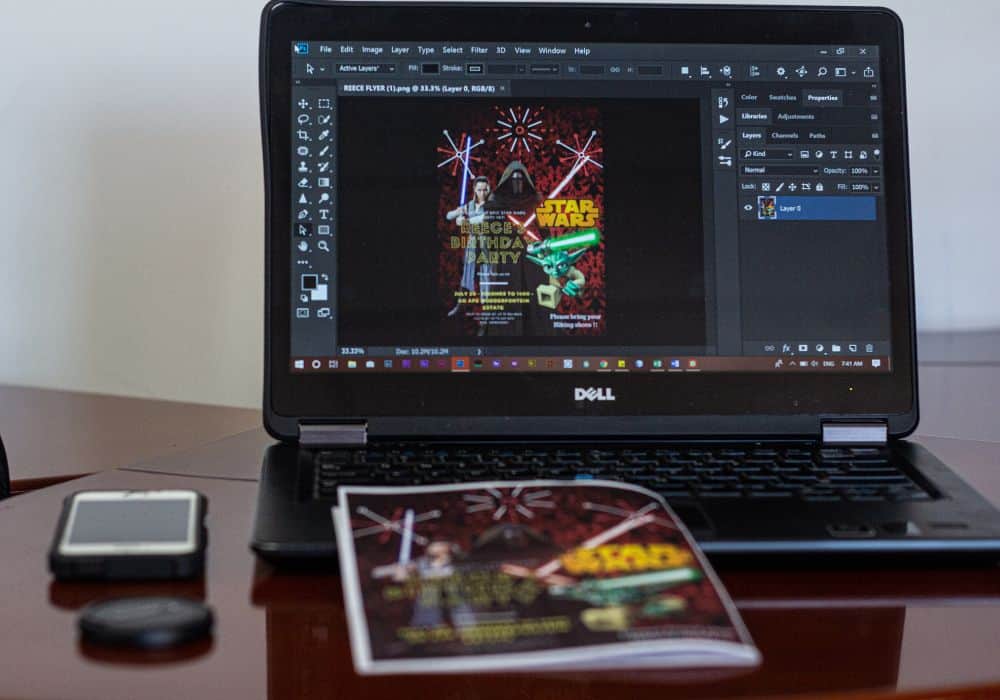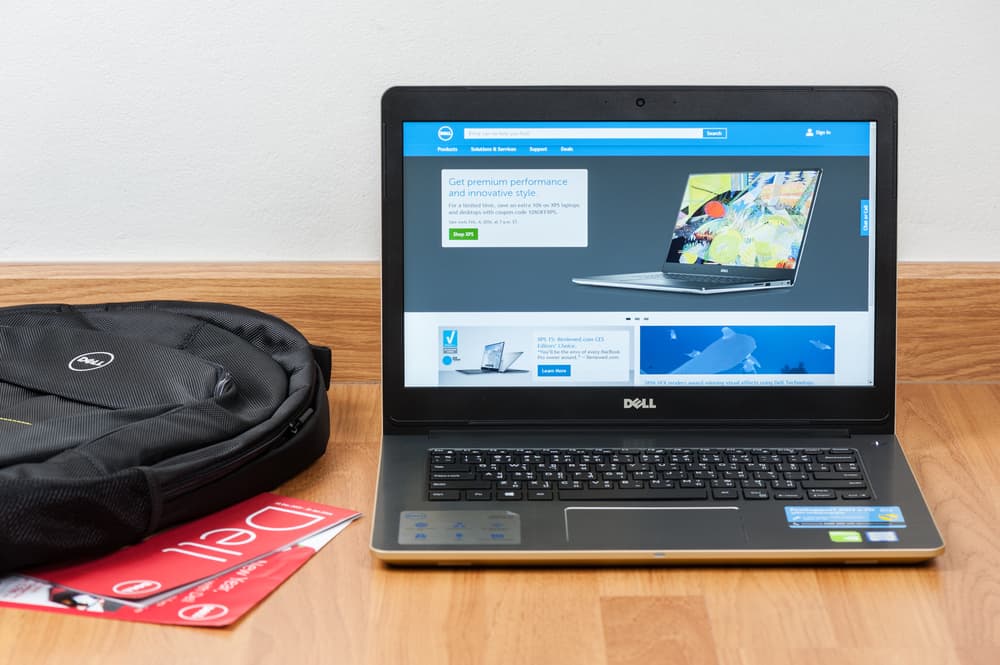We expect our devices to charge the moment we plug them in, and even a moment of hesitation can make your heart skip a beat. If you have a problem with your Dell battery charging, you want to remedy the issue as soon as possible.
This may happen for a number of reasons, but you can usually diagnose the issue from the comfort of your home in under an hour. This lets you get back to using your laptop as needed as soon as possible.
In this guide, we explain common Dell battery and charging issues and what steps you should follow to remedy the problem. These range from easy fixes to more serious changes, all of which are covered in this article.
Table of Contents
What to Do First When Your Dell Laptop Battery Doesn’t Charge
Stop using your laptop when you first notice a charging issue. This prevents you from running out of a charge that you may need for some of these troubleshooting steps.
After you notice the problem:
- Verify your charger connection
- Check your adapter, power cable, charging ports, and wall outlet
- Inspect your laptop and the battery
- Run your Windows troubleshooter
These can prevent you from panicking over a simple issue and set the stage for deeper troubleshooting.
1. Verify Connection
We hate to say it, but make sure your charger is plugged in (both to your laptop and the wall). It’s easy to assume the connection is complete, but it’s just as easy to forget you unplugged the charger.
If your laptop is plugged into a power strip, move the AC adapter to a wall socket. Some surge protector functions may interfere with charging.
Once you’ve done this, make sure the laptop charger sits snugly in the port and it’s plugged in all the way. If there’s any wiggle room, you may have a broken charger port.
2. Verify AC Adapter
Make sure your laptop is recognizing your AC adapter by checking it over in your BIOS.
Restart the computer, then hit F2 when the dell logo shows up until you see Entering Setup. Here you should see what AC adapter you’re using.
If it says none, it means it’s not recognizing the charger at all. Make sure it’s connected properly.
If it says the charger is unknown , there is an adapter issue. If it names your AC adapter, there shouldn’t be a problem with the charger.
3. Check Over Adapter, Charging Cables, Ports, and Outlets
Check all your hardware for any obvious signs of wear, such as cracks, dents, or frays. The smell of melted plastic is another key indicator of a hardware issue. If you notice damage, you should replace the affected part as soon as possible.
Make sure your outlet works by plugging in another electronic device that you know works fine, such as a cloth or another charger. If you have a different charger for your laptop, try using that one.
Make sure there is no dirt, dust, or debris in your plugs or ports that may interfere with your connection. You can clear larger obstructions with a toothpick or cotton swab.
A soft cloth and rubbing alcohol will clear any built up grime and dry quickly to let you resume charging.
4. Inspect Laptop and Laptop Battery
Likewise, check your laptop and laptop battery for signs of damage.
Remove the battery (if possible) for deeper inspection. Turn the laptop off and disconnect all accessories and cables first. (If your battery requires you to disassemble the laptop to remove it, make sure this won’t void your warranty.)
Once the battery is free, hold down your power button to clear any residual charge. Plug the charger in and try to turn the laptop on. If this works, the issue may be with your battery or its connection.
The battery should be free of any signs of damage, especially punctures or bulges. If you don’t see an external reason the battery isn’t working, try cleaning its connections with rubbing alcohol and a soft cloth to remedy the issue.
Replace the battery, then see if that fixes the issue.
5. Windows Troubleshooter

Dell laptops have a built in troubleshooter that might point you in the right direction. If your laptop can power on, access this by opening your run utility box (Windows + R).
Type Control, then hit enter. This opens your control panel, and you can search for the troubleshooter in the search bar at the top right.
Once you’re in the troubleshooter, locate System & Security then Power. Run the troubleshooter, then proceed with any recommendations it has.
How to Adjust Settings and What to Update When Battery Isn’t Charging
In most cases, a Dell battery that doesn’t charge can be fixed by adjusting your battery power settings, program usage, or updating your BIOS and drivers. These also tie into the usual operation of your device, and you should update these settings regularly.
These fixes affect your laptop’s performance and its ability to communicate with the battery and your charging device. They won’t fix hardware issues or other complications with your device.
1. Power Settings
Find your energy or power settings in the Power & Sleep menu in your System Settings. Small details, such as screen brightness or keyboard lighting, can make a big difference in your energy draw.
These settings may also instruct your laptop to shut down after a certain period of time or not to charge while in use to protect your battery life. Go through all your options and choose the settings that make the most sense to you.
2. App and Program Usage
A laptop should be able to increase its charge, even if you’re using it. If the charge level continues to deplete despite recognizing the charger and charging fine while it’s off, you might be using too many programs or using high-draw applications.
This is common with games or editing software. Older batteries may not be able to hold up to the draw for a long period.
It’s best to close any programs you aren’t using. You can also check what’s running by opening your Task Manager. Some processes run in the background and drain your battery, and you can end them here.

3. Battery Driver and Adapter Driver
Your laptop’s drivers allow the operating system to communicate with the connected hardware, including your battery and your charger. If you fail to keep these drivers updated, you run into issues with these systems.
To update your drivers:
- Open Device Manager
- Expand your battery menu (you should see Microsoft AC Adapter and Microsoft ACPI-Compliant Control Method Battery)
- Right click each device and select update driver
If the new driver doesn’t fix the issue, right click and uninstall the drivers. When you restart your laptop it will automatically download and reinstall the drivers and may fix the issue.
4. BIOS Update
Your Basic Input Output System (BIOS) is what boots and initializes your hardware. Like your drivers, an outdated system can prevent proper communication or initialization of these systems.
To update your bios, find your specific Dell laptop model on the Dell website and install the latest BIOS. You may also contact Dell for help locating the BIOS update for your system.
Make sure you back up your data before updating BIOS. This is a larger-scale update, and issues may cause you to lose some data.
You will also need at least 10 percent battery to install and update your BIOS. You can force an update with a lower charge, but your laptop may not have enough power to install it successfully.
Further Troubleshooting for a Dell Battery that Won’t Charge
If these adjustments and updates don’t fix the issue, you can try isolating your battery charging in BIOS. This limits external factors that may impede charging while your computer runs.
Performing pre-boot hardware tests will also help you determine any outlying issues that need attention.
Battery Charging in BIOS
In some cases, your operating system settings may interfere with the charging function. Charging in BIOS starts the process before your operating system boots up, preventing this issue.
If this is the problem, the laptop should charge when you’ve shut it off.
You can also force this situation by restarting the laptop, and th4en pressing F2 until BIOS opens up. Once BIOS launches, you should be able to charge your battery.
Hardware Diagnostic Test
To diagnose hardware issues before your operating system boots, turn on your laptop and then press F12 until a one time boot menu opens.
Use your arrow keys to launch diagnostics, then press enter and follow the subsequent instructions. If there are any issues, note the error and validation codes and take them to Dell Technical Support for further assistance.
Conclusion
These tactics should resolve your issue, but they won’t help if the issue is ultimately a dead battery or laptop charger. If your Dell battery is still not charging after this troubleshooting, contact Dell’s technical team for further assistance.
In most cases, this involves finding a suitable battery replacement or purchasing a new charger.
Dell’s technical support team is also invaluable when it comes to diagnosing specific issues that deviate from the norm, but you can comment with your problem below for more assistance.
